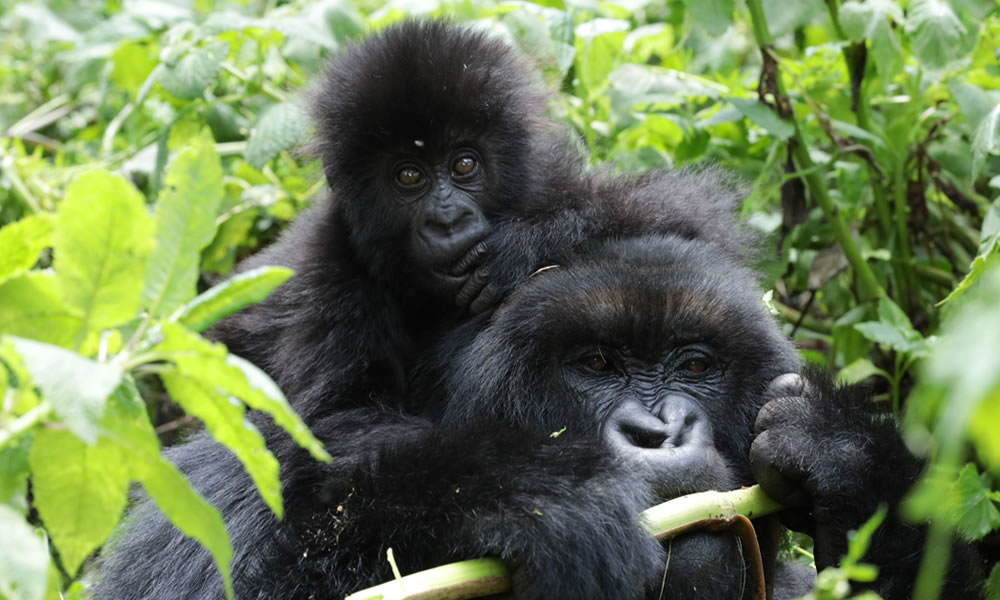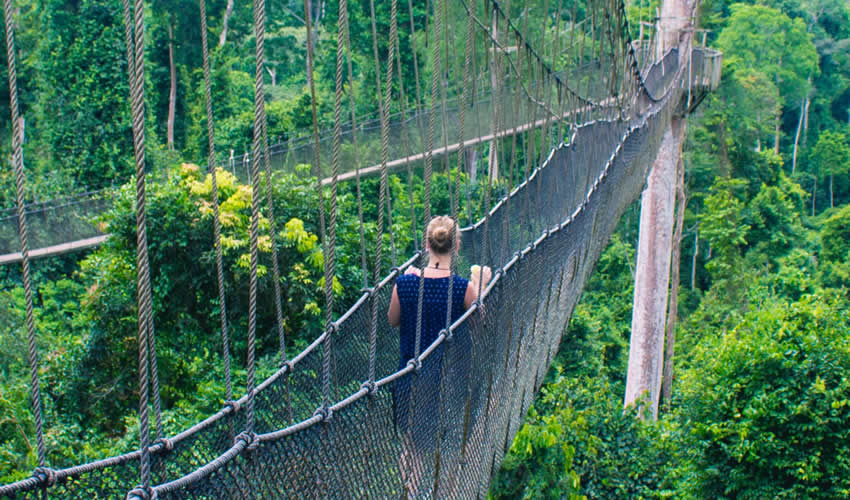Rwanda Gorilla Families in Volcanoes National Park

Rwanda’s Volcanoes National Park is home to one of the most iconic wildlife experiences on the planet, gorilla trekking. This park, located in the northwest of the country, is part of the Virunga Mountain range and is one of the few places in the world where you can see mountain gorillas in their natural habitat. The park is home to several habituated gorilla families that tourists can visit during their trekking adventures. These Rwanda Gorilla Families in Volcanoes National Park play a critical role in conservation and offer visitors a rare and unforgettable experience.
Understanding Gorilla Families in Volcanoes National Park
The mountain gorillas living in Volcanoes National Park are divided into different family groups, each led by a dominant silverback gorilla. Silverbacks are mature male gorillas that have reached adulthood and gained leadership of a family due to their strength and experience. Each family can consist of several females, babies, and younger males, all living together in a social group. These families have been carefully habituated over time, meaning they have become accustomed to the presence of humans, allowing visitors to trek into the park and observe their behavior without causing them stress.
There are around 10 habituated gorilla families in Volcanoes National Park, and each family has its own unique traits, personalities, and dynamics. Some families are known for being more interactive and curious about human visitors, while others are more reserved. Regardless of their behavior, all of the gorillas in Volcanoes National Park are part of a conservation effort that has helped increase the population of mountain gorillas in the wild, making it a success story in the world of wildlife preservation.
Notable Gorilla Families in Volcanoes National Park
-
Susa Group
The Susa Group is one of the most famous and frequently visited gorilla families in Volcanoes National Park. Known for its large size and diverse members, the Susa Group is led by the powerful silverback Karisimbi. This group is unique for having several twins and multiple generations of gorillas, making it a fascinating family to track and observe. Susa Group also spends time in higher-altitude areas, which means the trek to see them can be more challenging, but it is definitely rewarding for those looking for a more adventurous experience.
-
Amahoro Group
The Amahoro Group, meaning “peace” in Kinyarwanda, is known for its calm demeanor. The group’s silverback, Ubumwe, is a gentle giant who maintains harmony within his family. The Amahoro Group is generally more accessible compared to other families, making it a popular choice for trekkers. Visitors can often see the gorillas resting, feeding, and interacting with each other in a serene environment.
-
Hirwa Group
The Hirwa Group is one of the more recently formed families and is known for its dynamic nature. The name “Hirwa” means “lucky” in Kinyarwanda, which reflects the family’s lucky circumstances in being able to come together after a split from another group. The group is led by the silverback Rugendo and consists of several adult females, young gorillas, and a few juveniles. Hirwa Group has a reputation for being very playful, and visitors often get to observe the young gorillas engaging in playful antics and social bonding.
-
Kwitonda Group
The Kwitonda Group is another well-known family, led by the silverback Kwitonda. The group is typically found in the dense forests of Volcanoes National Park and can be more challenging to track. Kwitonda’s group is characterized by its strong bonds and the peaceful nature of its members. The family is often seen foraging for food or resting in the forest, making it a special and intimate experience for trekkers.
-
Umubano Group
The Umubano Group is an energetic and social family, led by the silverback Charles. The group is known for its playful younger members and its energetic interactions. The silverback ensures the group’s safety while maintaining a peaceful and balanced environment. Trekking to visit this family offers an exciting opportunity to observe the gorillas in action, whether they are foraging, moving through the forest, or interacting with one another.
The Importance of Gorilla Conservation
Visiting the gorilla families in Volcanoes National Park is not just an incredible experience for wildlife lovers; it also plays a significant role in conservation efforts. The mountain gorilla population had been dwindling due to poaching, habitat loss, and disease, but thanks to ongoing conservation efforts by organizations such as the Dian Fossey Gorilla Fund and the Rwanda Development Board (RDB), the population has been slowly recovering.
Gorilla trekking permits, which fund conservation efforts and provide employment for local communities, contribute directly to the protection of these majestic creatures. The revenue from tourism is used for anti-poaching patrols, forest restoration, and the overall management of the park. In turn, this has helped increase the mountain gorilla population, with the most recent census showing a steady rise in their numbers.
The Rwanda Gorilla Families in Volcanoes National Park offer more than just an unforgettable adventure—they are part of a broader conservation effort that is ensuring the survival of one of the world’s most endangered species. Whether you’re trekking to see the majestic Susa Group or the playful Umubano family, your visit helps support the ongoing preservation of these magnificent creatures. As one of the few places in the world where you can encounter mountain gorillas in the wild, Rwanda’s Volcanoes National Park provides a unique and life-changing experience for every visitor.



